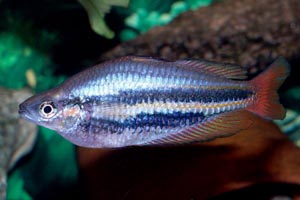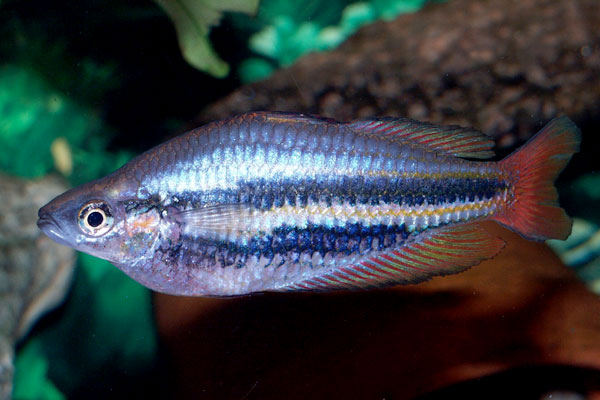

Species Profile | Images | Breeding Report | Similar Species

(Other members of the genus Melanotaenia)
ADULT SIZE: 12 cm
WATER CONDITIONS: Moderately hard and alkaline
TEMPERATURE RANGE: 23-25 C
FOOD: Feed Melanotaenia trifasciata live and dried foods
DISTRIBUTION: This species comes from Australia
SEXUAL DIFFERENCES: Males are somewhat more intensely coloured than females.
AQUARIUM CARE: A relatively widespread rainbowfish with a number of truly beautiful poulations. This really is a jewel rainbowfish! It is a fine community species in larger tanks (at least 48"), and appreciates flowing water.
A suitable tankmate for similarly sized rainbowfish, tetras, cyprinids, and even Lake Tanganyika cichlids.
BREEDING: Best accomplished with spawning mops and the fry raised seperately. Fry can immediately take newly hatched artemia nauplii
Have you bred Melanotaenia trifasciata? Why not fill in a breeding questionaire?, or examine existing Melanotaenia trifasciata breeding reports
Other members of the genus Melanotaenia
Other rainbowfish species
Other species from Australia

There are many strains (color varieties) of the jewel rainbowfish; some are very different from others
BREEDING: Best accomplished with spawning mops and the fry raised seperately. Fry can immediately take newly hatched artemia nauplii
Have you bred Melanotaenia trifasciata? Why not fill in a breeding questionaire?
Sorry no records.